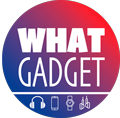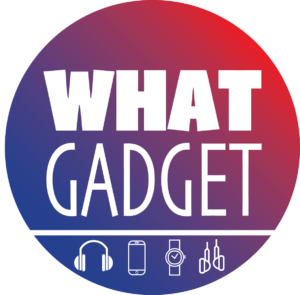If there’s one lesson the digital world has learned over the past decade, it’s this: design isn’t just about how something looks. It’s about how it works for everyone. And that’s where UX testing plays a huge role in supporting accessibility.
Accessibility is often thought of as a separate box to check—something you tack on after a site is built. But in reality, accessibility and user experience are deeply connected. When you make your product easier for people with disabilities, you often make it better for everyone. And the most effective way to discover where you’re succeeding or falling short is through UX testing.
In 2025, businesses can no longer afford to treat accessibility as optional. Not only are legal requirements expanding, but customer expectations are higher than ever. People expect smooth, inclusive digital experiences, regardless of ability, device, or environment. UX testing is how you make sure you deliver.
Why Accessibility Matters for User Experience
Before we dive into the role of UX testing, it’s important to understand why accessibility is a cornerstone of good user experience.
Think about it this way: UX is about reducing friction, making journeys smoother, and helping users accomplish goals without frustration. Accessibility is about ensuring that those journeys are possible for everyone, including people with visual, auditory, cognitive, or motor impairments.
An inaccessible product isn’t just frustrating for users with disabilities—it’s bad UX for everyone. If a button is too small to tap, that’s a problem for someone with limited dexterity, but it’s also a problem for anyone using your site on a crowded subway with one hand. If color contrast is too low, it excludes users with vision impairments but also makes life harder for people looking at a phone in bright sunlight.
Accessibility improves usability across the board. And UX testing is the bridge that ensures those improvements happen.
What UX Testing Really Reveals About Accessibility
Traditional accessibility audits focus on technical standards—contrast ratios, ARIA labels, screen reader compatibility. These are crucial, but they don’t always capture how a real person with real needs experiences your product.
UX testing fills that gap. It shows not just whether your product meets guidelines, but whether it’s actually usable in practice.
When you run usability tests with a diverse group of participants, you begin to see:
- How someone using a screen reader navigates your site.
- Whether your forms are intuitive for someone with cognitive differences.
- If your interactive elements are accessible via keyboard alone.
- How color choices, font sizes, and spacing impact readability.
UX testing doesn’t just check boxes. It reveals barriers and frustrations that guidelines alone can miss.
How UX Testing and Accessibility Overlap in 2025
In 2025, UX testing and accessibility are more connected than ever. Here’s how the overlap plays out:
Task Completion Rates
When users can’t complete tasks due to design barriers, it shows up in UX testing metrics. Accessibility issues often surface here.
Error Patterns
Repeated user errors can indicate more than confusion—they can signal accessibility gaps.
Emotional Feedback
One of the most powerful insights from UX testing is how users feel. If frustration spikes among users with assistive technologies, that’s an accessibility problem.
Inclusive Recruitment
Modern UX testing increasingly includes participants with diverse abilities. This isn’t a special add-on—it’s becoming the standard.
Accessibility is baked into UX testing, not bolted on afterward.
Why Accessibility Is a Business Imperative
Accessibility isn’t just about compliance. It’s about revenue, brand loyalty, and growth.
- Wider audience reach: Over one billion people worldwide live with a disability. Designing inclusively opens your product to a much larger market.
- Better SEO: Many accessibility improvements—like alt text, semantic HTML, and fast-loading pages—also improve search rankings.
- Legal protection: Lawsuits and regulations around digital accessibility are increasing globally. Proactive testing reduces risk.
- Stronger brand trust: Companies that prioritize inclusivity send a powerful signal: “We care about all of our users.”
UX testing makes these benefits tangible. It shows where you’re meeting the mark and where you need to improve.
Real-World Examples of UX Testing Supporting Accessibility
Let’s look at a few scenarios where UX testing directly uncovered accessibility wins.
Ecommerce checkout flow: A retailer noticed high cart abandonment rates. UX testing with users who relied on screen readers revealed that the checkout form wasn’t labeled properly. Fixing this not only improved accessibility but boosted overall conversions.
Video content platform: Testing showed that users in noisy environments struggled with video content. Adding captions not only helped users with hearing impairments but increased engagement for everyone.
Banking app: A financial institution found through UX testing that their app’s touch targets were too small for users with limited dexterity. After redesigning for accessibility, satisfaction scores rose across all demographics.
These examples show that accessibility fixes discovered during UX testing often benefit all users, not just those with specific needs.
Methods of UX Testing That Support Accessibility
Not all UX testing methods are equal when it comes to accessibility. Some are especially powerful for uncovering inclusion issues.
- Remote usability tests: Let users test from their own environments, with their own assistive technologies.
- Task-based studies: Ask users to complete specific actions, like filling out a form or checking out, and observe where barriers appear.
- Think-aloud protocols: Encouraging users to narrate their experience surfaces frustrations that might not be visible otherwise.
- Mixed-ability participant groups: Including users with visual, auditory, cognitive, or motor differences makes accessibility insights unavoidable.
This is where the term accessibility testing sometimes comes in—focused evaluations of how accessible a product is. But by embedding accessibility into broader UX testing, you catch issues early and naturally, rather than treating them as an afterthought.
The Role of Inclusive Design in UX Testing
UX testing doesn’t just reveal accessibility issues. It actively shapes more inclusive design practices.
For example, when test participants struggle with small fonts, you don’t just “fix the font size.” You reconsider your design system to make text scalable across devices. When color contrast fails, you don’t just tweak a shade—you rethink your palette to ensure future components meet accessibility standards.
Over time, UX testing supports a culture where accessibility is baked into every design decision. It becomes part of the DNA of your product, not a last-minute checklist.
The Future of UX Testing and Accessibility
Looking ahead, the connection between UX and accessibility will only deepen.
AI is starting to predict accessibility barriers before products launch. Virtual and augmented reality interfaces are creating new accessibility challenges that UX testing will need to address. Voice-driven products will demand usability studies that consider accents, speech differences, and cognitive load.
But no matter how technology evolves, the principle stays the same: test with real people, learn from their experiences, and design inclusively.
Why Companies Can’t Ignore This in 2025
Ignoring accessibility in 2025 is like ignoring mobile optimization in 2015—it’s no longer an option. Users expect it, regulators demand it, and competitors who prioritize it will win.
UX testing is your safety net. It ensures that accessibility isn’t a side project but a natural part of creating better digital experiences. It uncovers barriers you didn’t even know existed and turns them into opportunities for improvement.
UX Testing as the Foundation of Accessibility
At its core, UX testing is about empathy. It’s about stepping outside of assumptions and watching how real people use your product. That’s why it’s so powerful for supporting accessibility.
By testing with diverse users, by observing where friction appears, and by continuously refining, you create products that don’t just work—they work for everyone.
In 2025, that’s not just the right thing to do. It’s the smart thing to do. UX testing is the foundation of inclusive design, and accessibility is the result.










Recent Comments